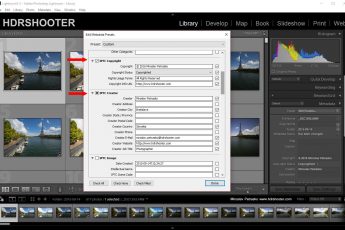Luminar 2018 – review
Recently Macphun (now Skylum after the name change) released a new version of Luminar, the Luminar 2018. And since I had it for a while, and I had the ability to try it out with editing, here are my thought about it.
What is Luminar 2018
If I had to describe Luminar compared to other, mostly Adobe software I regulatory use, I would say it’s mostly similar to the develop part of Lightroom, without the library organization stuff, with some elements of Photoshop and from other plugins sprinkled in. It focuses on photo editing, so also all the tools that are available are photo centric.
Editing
When you first open Luminar, it almost seems barren. There are only few options and everything else is hidden. This is the biggest difference between Luminar and for instance Lightroom. While in Lightroom all options are open, and you change them directly. In Luminar you choose which ones you want to add. This makes it a bit less straight forward when you just want to quickly change something, but you could create a preset with the most used settings and just apply that to get to the start state you want. In the last update, they also added workspaces, which allows you to create sets of you most used filters and just add them all at once.
On the other hand, this allows for more freedom in editing. Again will compare this to Lightroom. Let’s say you want to darken the highlights. You move the slider completely to the left, and if you want to darken it more, you would have to use masks or gradients to get it darker. In Luminar, you just add the Highlights/Shadows filter again and again, as many times you want and so the effect multiplies. You can repeat an edit as many times you want.
User Interface
I went into Luminar without having a look at any tutorials or videos. Even so, withing maybe 15-20 minutes I got the hang of it and was onto editing. The UI is just so straight forwards. You open a photo, add filters to it, tweak the settings and repeat. There is also an option for using layers, if you want to modify parts of the photo or blend different effects, but the process is exactly the same as on the base layer.
While the UI is ok, there are small issues here and there I did not like. For instance, next to filter name are two arrows. One collapses the menu, the second one allows to reset the settings or delete the layer. And since if you click on the name, you get the same menu, it makes it needlessly hard to just collapse the filter. This can be so much simpler. Click on the name to collapse, and a bigger button to open the menu. Or where is the option to see the layer mask on the photo? The red overlay is pointless, especially if you use luminosity masks. And which luminosity mask is used?
For most of editing you will never encounter little inconsistencies like this. But I go directly to this, more advanced stuff, and there is a bit of maturity missing in some parts of the program.
Features
Luminar offers all of the basic features you would expect from a photo editing program but also a lot of advanced ones. From RAW development, to structure, radiance, clarity, dramatic, fog, polarizer, sharpenind, noise reduction and many more. Luminar also comes with a lot of predefined presets, so if you are really lazy, you can just use those and don’t even bother with the filters.
Again as mentioned, Luminar combines features that you would find in software like Lightroom, Photoshop, Color effex and others. It tries to put them all in one place for a more convenient approach to editing. Since you don’t see them all at once, it does not feel as overwhelming as with some other softwares.
Performance
Performance was a bit of a hit and miss for me. It worked fine most of the time, but then I also experienced some slow downs and problems. Especially when I tried to brush in a new layers, it would not update properly and instead of the brush strokes I seen just black squares. I tried it both on a Surface Pro 4 with i5 and 8gb of ram and also on a desktop with i7 and 32gb of ram, and I seen no huge difference in performance. You still have to wait a second or so for an filter to be applied.
Conclusion
Luminar does a lot of things very well. For a lot of photographers it could be the only program they would need to edit their photos. For me, it’s not enough. Where you need only to use filters on your photos, it’s great, it lacks short the moment you need to do more with layers and masks. Photoshop is just better there. I seen a lot of additions just within weeks, so it may be that one day it will be enough also for that. They are already teasing a library addition. With that could completely replace Lightroom, so I will revisit it once that is added, to see how it looks.
But if you are in a market for a new editing software or you are just a begginer, you should give it a try. Could be just what you are looking for.
You can see more about Luminar on the Skylum website here. If you decide to buy, you can use the code HDRSHOOTER for 10USD off.
To see all other reviews on the blog, please visit the Reviews category here.












Leave a Comment